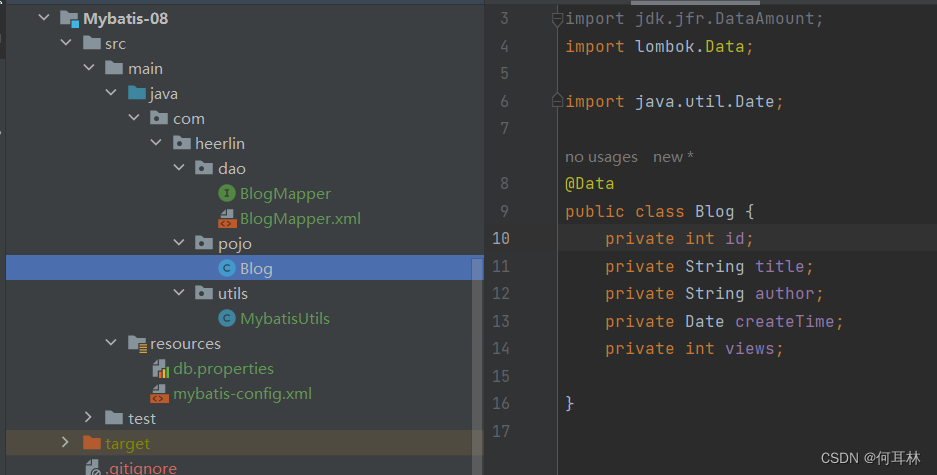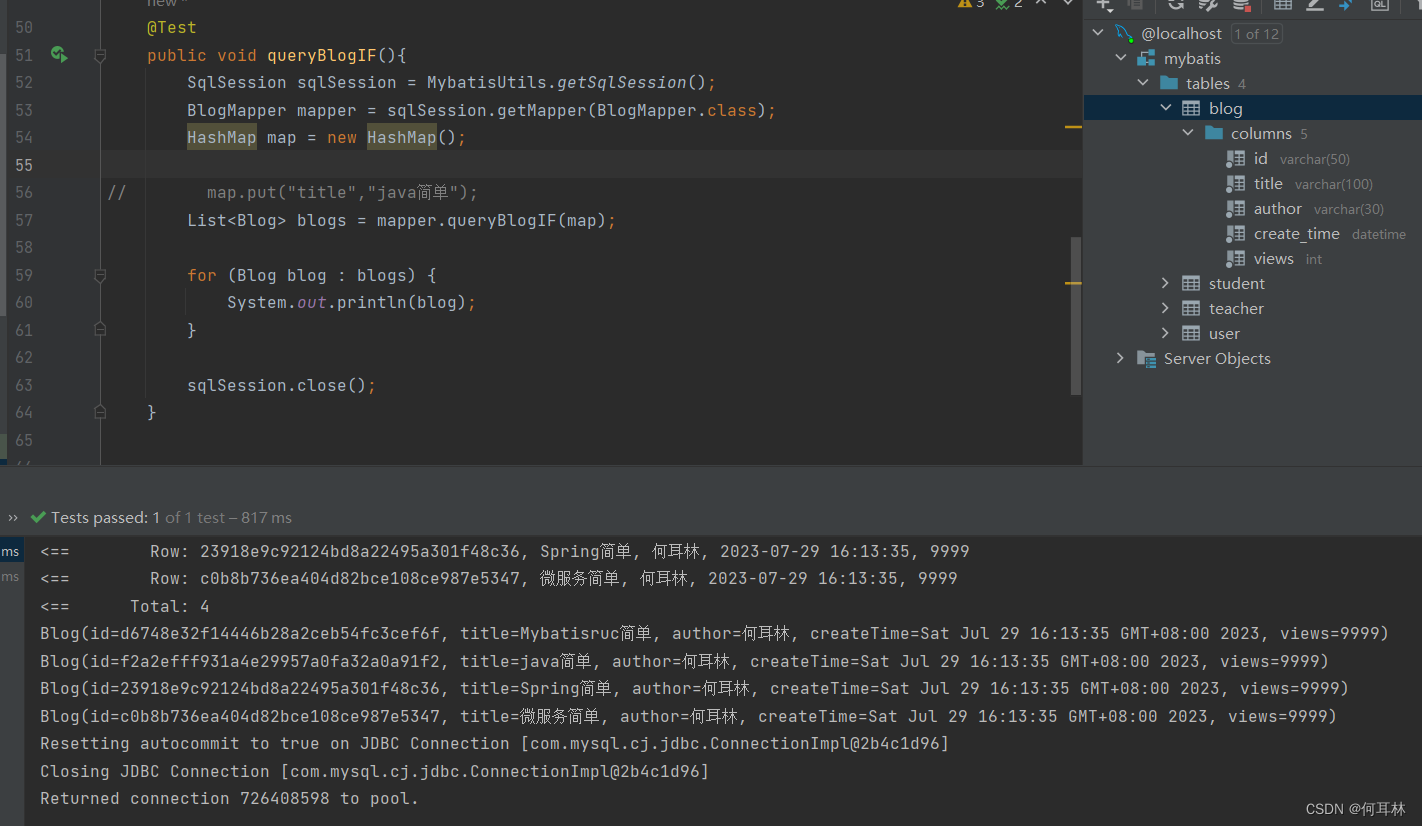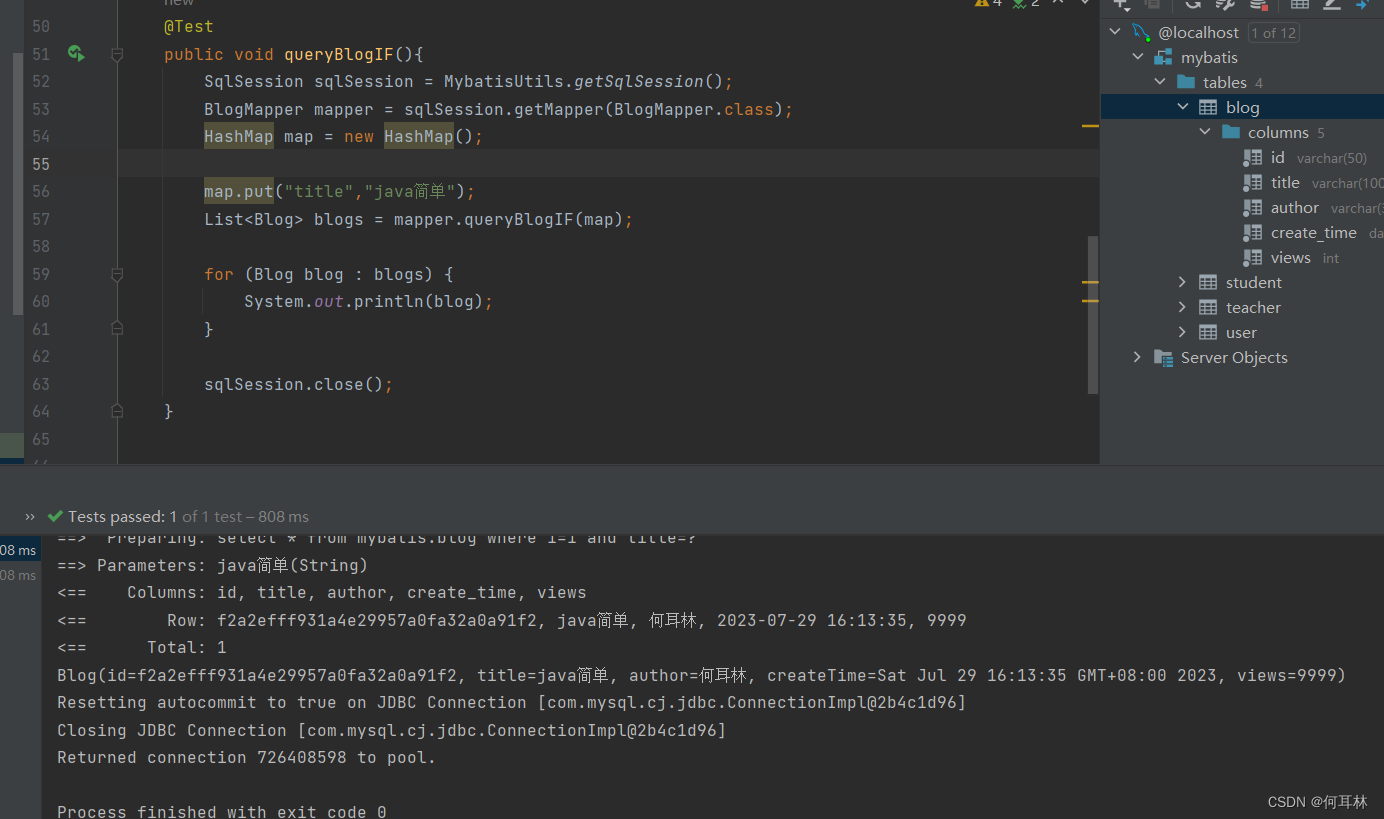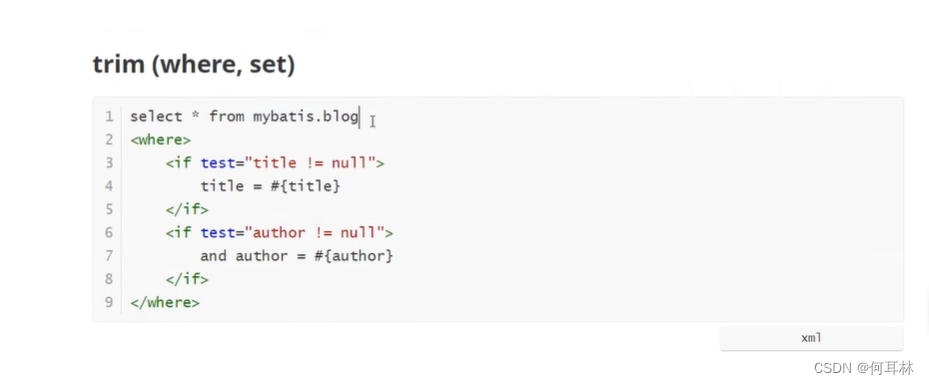什么是动态sql:
指根据不同的条件生成不同的sql
搭建环境:

建表:
create table blog(
id varchar(50) not null comment '博客id',
title varchar(100) not null comment '博客标题',
author varchar(30) not null comment '博客作者',
create_time datetime not null comment '创建时间',
views int(30) not null comment '浏览量'
) ENGINE=InnoDB DEFAULT CHARSET=utf8mb4创建基础工程:
接口:
package com.heerlin.dao;public interface BlogMapper {
}xml文件:
<?xml version="1.0" encoding="UTF-8" ?>
<!DOCTYPE mapperPUBLIC "-//mybatis.org//DTD Config 3.0//EN""https://mybatis.org/dtd/mybatis-3-mapper.dtd">
<mapper namespace="com.heerlin.dao.BlogMapper"></mapper>编写实体类
import jdk.jfr.DataAmount;
import lombok.Data;import java.util.Date;@Data
public class Blog {private int id;private String title;private String author;private Date createTime;private int views;}utils:
package com.heerlin.utils;import org.apache.ibatis.io.Resources;
import org.apache.ibatis.session.SqlSession;
import org.apache.ibatis.session.SqlSessionFactory;
import org.apache.ibatis.session.SqlSessionFactoryBuilder;import java.io.IOException;
import java.io.InputStream;public class MybatisUtils {private static SqlSessionFactory sqlSessionFactory;static {try {//创建数据库会话sqlSessionFactoryString resource = "mybatis-config.xml";//输入流InputStream inputStream = Resources.getResourceAsStream(resource);sqlSessionFactory = new SqlSessionFactoryBuilder().build(inputStream);} catch (IOException e) {throw new RuntimeException(e);}}// 定义一个公共的静态方法,用于获取 SqlSession 对象public static SqlSession getSqlSession() {// 打开一个新的 SqlSession 会话return sqlSessionFactory.openSession();}
}
小技巧:开启驼峰命名转换
配置:

if
那就先写个接口吧

写个sql:

<select id="queryBlogIF" parameterType="map" resultType="blog">select * from mybatis.blog where 1=1<if test="title !=null">and title=#{title}</if><if test="author !=null">and author = #{author}</if></select>接下来测试一下
当我们没给传参时会查出所有信息

当map里有参数时:只会查询对应的数据

说明我们所写的动态sql生效,这就是动态sql里最简单的if
choose(when,otherwise)
有时候,我们不想使用所有的条件,而只是想从多个条件中选择一个使用。针对这种情况,MyBatis 提供了 choose 元素,它有点像 Java 中的 switch 语句。
还是上面的例子,但是策略变为:传入了 “title” 就按 “title” 查找,传入了 “author” 就按 “author” 查找的情形。若两者都没有传入,就返回标记为 featured 的 BLOG(这可能是管理员认为,与其返回大量的无意义随机 Blog,还不如返回一些由管理员精选的 Blog)。
<select id="findActiveBlogLike"resultType="Blog">SELECT * FROM BLOG WHERE state = ‘ACTIVE’<choose><when test="title != null">AND title like #{title}</when><when test="author != null and author.name != null">AND author_name like #{author.name}</when><otherwise>AND featured = 1</otherwise></choose>
</select>trim(where,set)
where 元素只会在子元素返回任何内容的情况下才插入 “WHERE” 子句。而且,若子句的开头为 “AND” 或 “OR”,where 元素也会将它们去除。
如果 where 元素与你期望的不太一样,你也可以通过自定义 trim 元素来定制 where 元素的功能。

)



![[数据库]对数据库事务进行总结](http://pic.xiahunao.cn/[数据库]对数据库事务进行总结)












————概论)

